1.4. Derivatives#
1.4.1. Tangent line and rate of change#
A tangent line touches a curve exactly once.
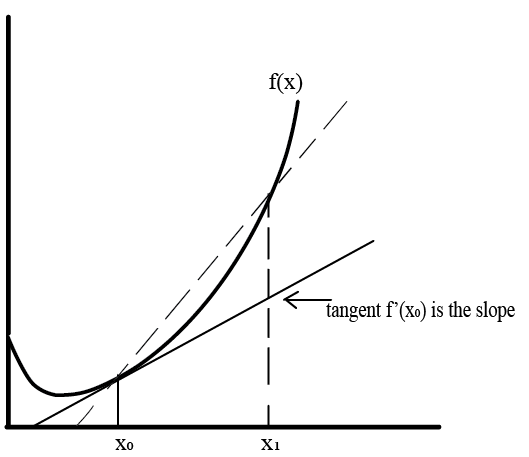
How can we estimate the slope of the line at \(x_0\)? First, evaluate \(f(x_0)\). Then, evaluate \(f(x_1)\) at another point nearby. The slope is:
If we make \(x_1\) very close to \(x_0\), we will get the slope of the tangent line. This suggests uses of a limit! We call the slope of the tangent to f at \(x\) the derivative of f.
The derivative represents how fast the function is changing (rate of change). This is especially useful in physics when the function represents a coordinate, and the independent variable is time.
Example: Ball moving with constant velocity
A ball has position coordinate x and is moving with constant velocity v, so
where \(x_0\) is the initial position that it starts from.
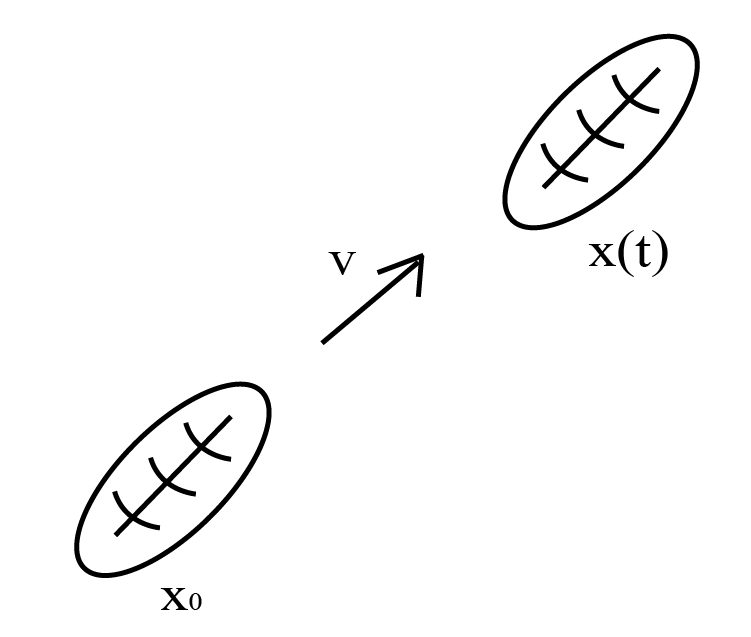
Show that the first derivative of the position x is the velocity v.
1.4.2. Formal definition#
The derivative is also a function!
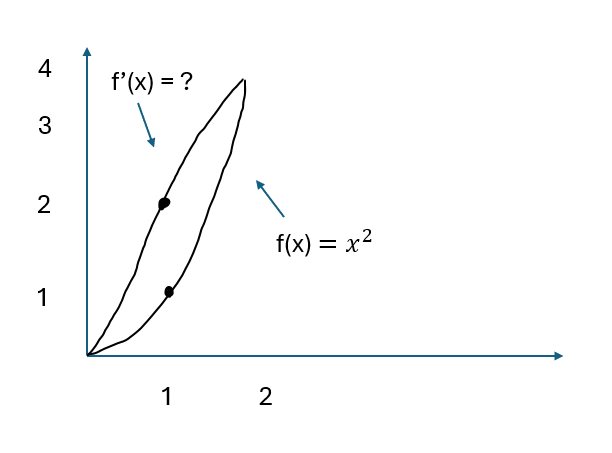
For example, if \(f(x) = x^2\),
This function represents how the slope of the line tangent to f is changing with x. For this function, the slope continually increases! Some additional examples:
\(f(x) = (x - 1)^2 + 1\)
Solution
(1.64)#\[\begin{align} f'(x) &= \lim_{h \to 0} \frac{[(x + h - 1)^2 + 1] - [(x - 1)^2 + 1]}{h} \\ &= \lim_{h \to 0} \frac{(x - 1)^2 + 2(x - 1)h + h^2 + 1 - (x - 1)^2 - 1}{h} \\ &= \lim_{h \to 0} \frac{2(x - 1)h + h^2}{h} \\ &= \lim_{h \to 0} 2(x - 1) + h \\ &= 2(x - 1) \end{align}\]\(f(x) = 1/x\)
Solution
(1.65)#\[\begin{align} f'(x) &= \lim_{h \to 0} \frac{\dfrac{1}{x+h} - \dfrac{1}{x}}{h} \\ &= \lim_{h \to 0} \frac{\dfrac{x - (x + h)}{x(x+h)}}{h} \\ &= \lim_{h \to 0} \frac{\dfrac{- h}{x(x+h)}}{h} \\ &= \lim_{h \to 0} \frac{-1}{(x+h)x} \\ &= \frac{-1}{x^2} \end{align}\]
1.4.3. Differentiability#
To be differentiable, this limit must exist. A function would not be differentiable at a jump, cusp, coner, or vertical tangent
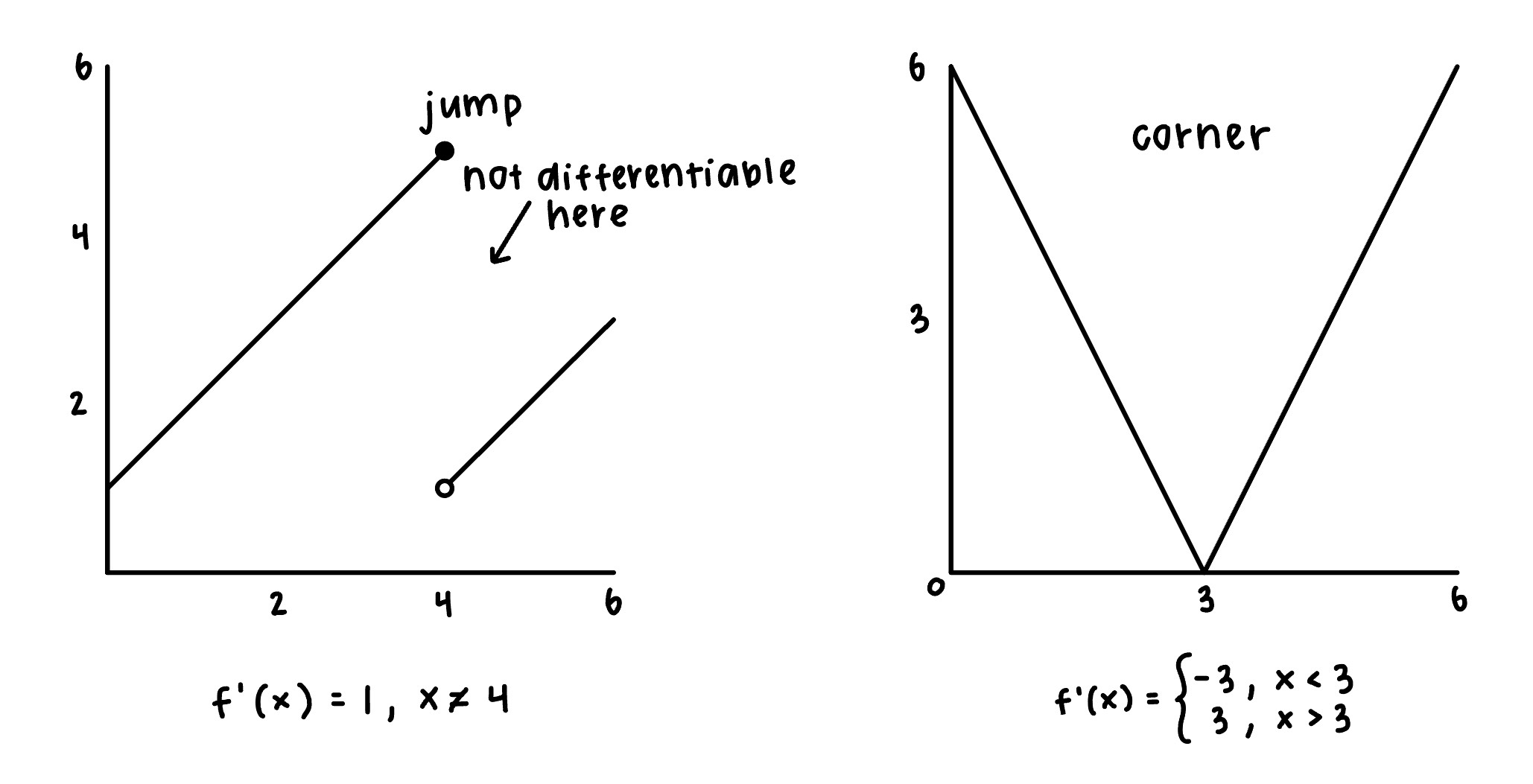
1.4.4. Higher-order derivatives#
We can try to take the derivative of any function, including the derivative itself! For example, consider \(f(x) = x^2\), which has \(f'(x) = 2x\). We can evaluate the derivative of \(f'\), which we will denote \(f''\) using the same formal definition:
We call \(f''\) the second derivative of f. Repeating the process we can obtain even higher-order derivatives. These may be denoted by additional primes (e.g., \(f'''\)), but often by a superscript (e.g., \(f^{(3)}\)) since it gets clunky to count too many primes.
Higher-order derivatives tell us about how lower-order derivatives are changing. For example, the second derivative tells us how the first derivative changes.
In a physical setting, we may have names for these different derivatives. For example, if we have the position x, the velocity v is the first derivative of x, while the acceleration a is the first derivative of v and second derivative of x.
Position |
Velocity |
Acceleration |
|---|---|---|
x |
x’ |
x’’ |
v |
v’ |
|
a |
Example: Ballistic motion
Consider the two-dimensional ballistic motion:
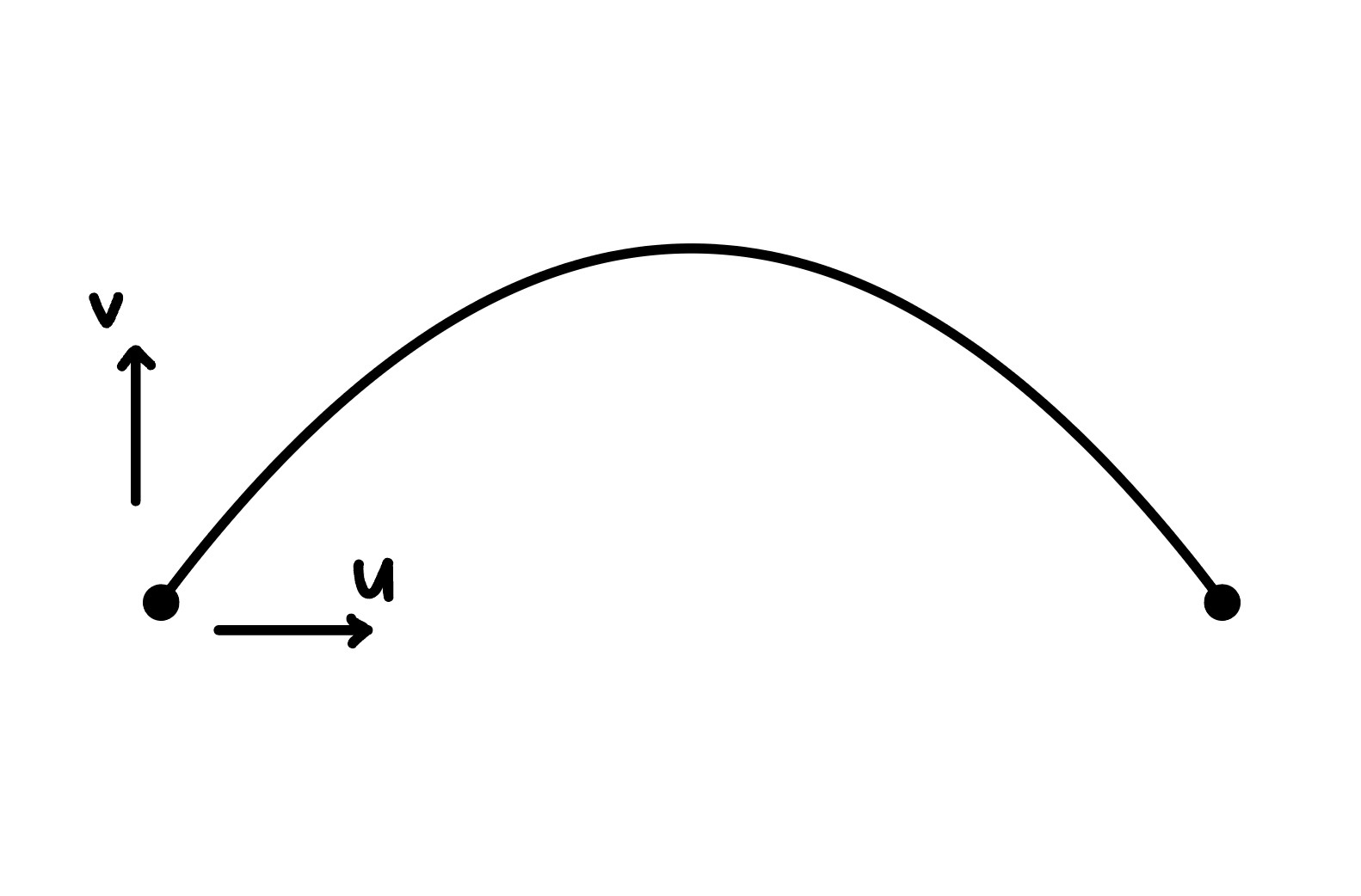
The equations of motion for the horizontal position x and vertical position y are:
where \(u_0\) and \(v_0\) are the initial x and y components of the velocity, and g is the acceleration due to gravity. Find the velocity and acceleration in x and y.
In the x direction, call the velocity u. Then,
Since u is a constant, the first derivative of u (second derivative of x) must be zero, and there is no acceleration in the x direction.
In the y direction, call the velocity v. Then,
The velocity in y is constantly increasing from the constant acceleration a due to gravity. This makes sense from what we know from physics!